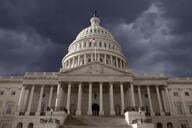You have /5 articles left.
Sign up for a free account or log in.

Andrii Rotkin/iStock/Getty Images Plus
In January I wrote a piece asking whether America’s research universities would make it to their 100th birthday, marking their birth with the creation of the National Science Foundation in 1950—its 75th birthday was May 10. The article built on concerns that our research universities are in a precarious state, with their resources stretched thin supporting their dual missions of education and research. At the end I added a new concern: with the beginning of the Trump administration would these institutions survive the year?
In only the first 100-odd days, the precipitous cancellation of grants and freezing of research support and now the proposed slashing of the budgets of the NSF and the National Institutes of Health and dramatic increase in the tax on university endowments have made my worst fears real. Are we really trying to end the partnership that has led to the greatest period of innovation in history?
With the creation of the NSF, the government and universities established a research partnership to feed the American economy and national defense and to train the R&D labor force. The partnership was supported by funding from both sides, coupled with an unrelenting commitment to research excellence and impact. By any measure it has been wildly successful, generating new knowledge, inventions and cures and educating generations to lead our economy and society.
In 2022 alone, the 174 Carnegie R-1—very research intensive—universities filed more than 20,000 patent applications and were granted nearly 6,000. But perhaps to understand why sustaining this partnership is vital to our future we only need to recall that the mRNA vaccines that spelled the end of the COVID-19 pandemic were built on research supported over decades by the NIH.
The scale of the partnership is apparent in the data: In 2022, university research spending totaled $97.8 billion, with $54.1 billion coming from the federal government. What has not been widely acknowledged is that universities contributed $24.5 billion of this total in the form of self-supported research and cost sharing, especially supporting the misunderstood indirect costs of research. Many of these expenses are not so “indirect,” as they support specialized spaces, facilities and instruments—you cannot do research in a parking lot.
Universities invested 45 cents for each federal research dollar received— this is the financing of the partnership. It seems like a bargain for the government to contribute only 0.2 percent of GDP (or less than 1 percent of the federal budget) to fuel innovation and the labor force of the world’s largest economy. Federal support of university research has grown only 44 percent since 2010. This compares to China’s threefold growth in investment in its universities.
The Chinese investment highlights the increasing competition for research talent, and we risk falling behind. Other countries are emulating us, building research universities and trying to attract the stream of talent that has come to the U.S. to learn, work and live. Our chilling climate for immigrants is making it much easier to lure this talent abroad.
American universities have done what they can to stay in front, with their own support of research growing twice as fast as federal funding, up from 30 cents to a federal dollar in 2010. It will be difficult for universities to continue to grow this investment. Following the pandemic, inflation has taken its toll. Now the funding cuts already imposed, and the enormous ones in the administration’s proposed budget, will shift billions in research costs to universities—costs they cannot afford. The proposed 15 percent cap on indirect costs alone—spread across all federal support—could cost the R-1 universities more than $10 billion, doubling their support relative to the federal government.
The result will be catastrophic, with universities retreating from research, essentially destroying in a few months the innovation ecosystem built over three-quarters of a century. The long-term impact will be devastating for all Americans, as measured in undiscovered inventions and cures, the global competition for ideas and people, and the country’s future economic prosperity.
Our innovation ecosystem will be hamstrung by the loss of a generation or more of research talent, who are either not trained or who go elsewhere. Already our talent pipeline is being constricted by cutting in half the number of NSF fellowships awarded to the most promising scientists and engineers. Reports also are mounting of scientists moving to countries where they are warmly welcomed with substantial government support. Is this our national strategy to strengthen America’s knowledge-based economy?
We are on the verge of an innovation winter that will last decades when we can ill afford it as we respond to demands to improve health care, compete for global dominance in AI and other critical technologies, and create a secure and peaceful world. Universities do face important challenges, such as expanding access, educating more Americans to be informed and thoughtful citizens, and giving them the skills to thrive in an AI-driven world. Universities can meet these challenges if they are supported.
We must avoid the innovation winter by continuing the partnership so our research universities remain the beacons for innovation and education that they have been for three-quarters of a century. This is the only way to keep America at the forefront, not at the back of the pack.
This choice is what is at stake for all of us.




